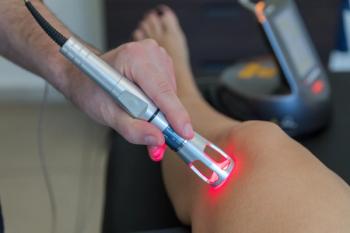
Methods to optimize filler outcomes, patient satisfaction
Dr. Susan Weinkle offers tips to minimize discomfort, which plays a large role in the patient’s perception of outcome.
With several dermal filler products on the market - and many more in the pipeline - it’s important for dermatologists to become comfortable with not only selecting them, but administering these injections, as well.
During the Fall Clinical Dermatology Conference session on Friday, October 18, Susan Weinkle, M.D., a dermatologist and surgeon in Bradenton, Fla., and fellow of the American College of Mohs Surgery, discussed effective methods for providing this service to patients.
“Knowing how to best use fillers is important for patients and providers alike,” she said. “If we understand how to optimally and safely use these products, we will get the best outcomes for our patients.”
It’s becoming increasingly important for dermatologists to master strategies that result in the greatest patient satisfaction with dermal fillers, she says. According to the American Society for Dermatologic Surgery 2018 Consumer Survey on Cosmetic Dermatologic Procedures, the use of injectable fillers among Millennial-age patients has doubled in the last six years, leading to an ever-growing patient population. And, based on survey results, a dermatologist is the preferred administering provider.
Injection preparation
There are currently 15 different filler products available to patients. Most come in 15mg/ml-to-25mg/ml concentrations, and they provide efficacy for anywhere between six months to two years. They have varying characteristics, Dr. Weinkle says, but the techniques that ensure dermatologists provide the best experience and results for their patients are largely the same.
No matter what product seems best for a patient, Dr. Weinkle recommends working with the patient prior to the procedure to ensure the best results are realized. Have the patient bring a front-view, non-animated photograph of themselves to the appointment. Not only does this get the patient involved in the aesthetic discussion, but it also gives the dermatologist the opportunity to assess the patient’s symmetry and balance and determine where and how to best inject the filler.
In addition, it’s critical to clean and prepare the skin to optimize injection results. In many circumstances, surgeons opt to use Hibiclens to disinfect the skin, but Dr. Weinkle suggests hypopchlorous acid that can be used in its place. This pH-neutral product creates a bleach when it’s applied to the skin that kills bacteria and promotes wound healing.
Patient comfort
A large part of how a patient feels about the results of their dermal filler rests on the injection itself. Consequently, Dr. Weinkle says it’s important to take steps to ensure the patient is as comfortable as possible during the procedure.
To reach that goal, Dr. Weinkle suggests various techniques dermatologists can use to minimize a patient’s discomfort during the dermal filler injection. She recommends:
- Tapping the skin to desensitize the area before proceeding with the injection.
- Pulling the skin into the needle.
- Angling the needle.
- Asking the patient to breath deeply and to expect a small pin-prick.
- Using a blunt-tip cannula, instead of a needle, to reduce bruising, swelling, and vascular complications.
Alongside improving the mechanics of the procedure, she says dermatologists can also relieve some of a patient’s stress, anxiety and discomfort through “talkthesia.” Using conversation to distract a patient from any possible pain can be an effective technique in optimizing his or her dermal filler experience.
Overall, Dr. Weinkle says, there is one main warning dermatologists should remember before administering a filler to a patient: Any dermatologist who does not take the proper precautions to avoid hurting the patient, does not use strategies that minimize bruising, or does not make every effort to ensure the patient looks as normal as possible after the procedure is at significant risk for having the patient opt for looking for a different provider.
Newsletter
Like what you’re reading? Subscribe to Dermatology Times for weekly updates on therapies, innovations, and real-world practice tips.

















